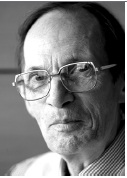I went down to Kyushu the other day—at the suggestion of an old Japanese friend, an investor. The deal was to meet a Japanese professor, a mechanical engineer who could just be on the way, using ocean thermal energy, to transforming the energy outlook for a sizable chunk of the world (“for everywhere between latitude 40° north and latitude 40° south, that means 60 countries,” he told me, when 1 eventually met the chap in question).
Before I say more, though, let me pause for a second. It helps to have been in Japan for a long time. Some 20 years ago I went out on a similar alternative energy story, in fact for The New York Times, and it proved to be a bust. You can’t utilize the energy of the waves to any great purpose, I learned the hard way. Conjuring up alternatives to those fossil fuels ain’t that easy.
What made me think that this time round it was different?
The honest truth is that hacks never know. We do not have facts at our fingertips for the most part. We are lazy, we work on instinct. It was pure kan that said, “Henry, get on a plane and go.”
And what did I find?
Remarkable! I met the professor at his University of Saga in western Kyushu—he is Haruo Uehara, a mechanical engineer of 60. It turned out that he has slogged on for decades in that meticulous, painstaking Japanese way to materialize an alternative energy system—lovely in principle, deeply correct environmentally—that promises very much for the future. It is a system—I will come to the essence in a moment— that experts in the West thought up a century ago, and have struggled with ever since, not managing to make it work. Uehara will succeed, I suspect, with a bit of luck. He is a remarkable chap—an author and an engineer. He got my attention from the word go with an off-the-cuff remark about the Good Ship Nippon.
“I am very optimistic for the future,” quoth Uehara Sensei, a slightly built wry feller with a shy smile. “The small companies here are tremendous, full of promise—but not the big ones, they are hopeless.”
I agree.
And what inspired this prescient remark? It’s a fascinating story. Some 27 years ago, in the spring of 1973 to be precise, half a year before the first oil shokku hit Japan, Uehara moved to take up a research project that has occupied him ever since. Over the years a number of big companies—Hitachi, Toshiba, Mitsubishi Electric—came around and told him what great work he was doing. But surprise, surprise, when the time came they were not willing to offer the necessary, a bit of finance.
He slogged on with a little help from his friends.
Fast forward 23 years. Prof. Uehara, by that time an acknowledged world leader in his field, with numerous patents to his name, did a deal four years ago with a small Kobe-based engineering design firm called Satomi Industries. The latter bought the patents—its idea is to commercialize the new system in about three years from now, while taking the Kobe company public.
In other words a little Kobe firm—Satomi has a payroll of a dozen engineers, it’s a design office basically— has taken on a bet that some of the mightiest kaisha in the world have spurned.
Who was right? My bet is on the tiddler. Again, it’s kan. No one can know. But I base my instinct on two facts.
One. Alternative energy is a field that was fraught with disappointment. It has always had one snag—a failure to be stable, steady, reliable. Consider solar energy (the sun goes behind clouds sometimes, right?); or, consider wind power (the wind does not blow all the time, right?). And finally what about wave power? Problem! The ocean can suddenly go flat as a proverbial millpond.
Two: What Uehara has in mind is a steady source of energy. Here’s the basic principle he’s spent his lifetime working on. You bring up cold water from a great depth in the ocean. You use that cold water to condense a conveniently chosen vapor (Uehara works with ammonia under pressure, held within a pipe system, therefore insulated from the water); next step, you let warm surface ocean water at 30°C approximately cause the liquid to vaporize again and—hey presto—it drives a turbine and you start the cycle again, once more liquefying the ammonia by using the cool of the deep water draught. And on you go…
Good, clean energy is thereby created. Moreover, that lovely water from deep down (Uehara-san favors 800 meters or deeper) contains all kinds of good things—minerals, not sure what exactly—that fish love.
The latest news—as reported by the Yomiuri from Saga on Oct. 12, the day I am writing this column—is that Prof. Uehara and his team are finally going into production. Or pilot production I should say. They are doing so in India—the Indian Government is supporting the prof, with money. A ship—more of a platform than a ship, to judge by a video Prof. Uehara showed me—is being built at a dock at Goa in India. It is about to be launched, will be fitted out, and will start a first test in mid-January in the Indian Ocean. The plan is to sink a pipe, with a diameter of a meter or more, down to a depth of about 800 meters—or a little more—and to pull up cool water (temperature 5°C) to the surface. The key scientifically is a 20-25° gap in temperature between the warm surface water and the stuff from the depths. The capacity of this pilot plant is 1,000 kw.
Will it work? I’ll keep you posted.









